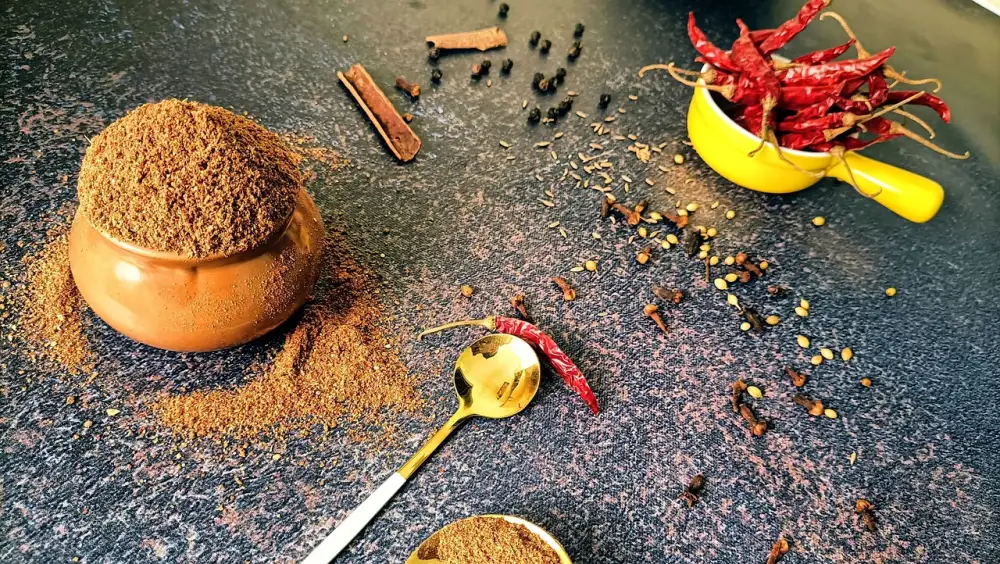Unlocking the Exotic Flavors of Ras el Hanout: A Taste of North Africa

Ras el Hanout, a fragrant spice blend originating from North Africa, particularly Morocco, is a culinary treasure renowned for its complex flavors and aromatic profile. The name translates to "head of the shop," indicating the best spices a merchant has to offer. This exotic blend typically contains a mix of over 20 different spices, carefully curated to create a harmonious balance that elevates dishes with its unique taste and aroma. Ras el Hanout is a staple in North African cuisine, adding depth and richness to tagines, couscous dishes, grilled meats, and more. Its warm, earthy notes with hints of sweetness and subtle heat make it a versatile spice that can transform any dish into a culinary masterpiece.
Origins and Cultural Significance
Ras el Hanout, a fragrant spice blend originating from North Africa, particularly Morocco, holds significant cultural importance in the region. The name translates to "head of the shop," indicating that it is the best blend a spice merchant has to offer. Historically, each spice vendor would have their unique mix of Ras el Hanout, with some blends containing up to 30 different spices. This complex blend symbolizes the rich tapestry of flavors and influences found in North African cuisine, reflecting the diverse cultural heritage of the region.
Key Ingredients in Ras el Hanout
Ras el Hanout, a traditional North African spice blend, is known for its complex and aromatic flavor profile. While the exact ingredients can vary from recipe to recipe, common components include cumin, coriander, cinnamon, ginger, paprika, cardamom, nutmeg, turmeric, and black pepper. Additionally, some blends may contain more exotic elements such as rose petals, lavender, or even ash berries. The combination of these spices creates a unique and versatile seasoning that adds depth and richness to a wide range of dishes.
Culinary Uses and Versatility
**Culinary Uses and Versatility**
Ras el Hanout is a versatile spice blend that adds depth and complexity to a wide range of dishes. It is commonly used in Moroccan cuisine to season tagines, couscous, and grilled meats. The blend can also be sprinkled over vegetables before roasting or used as a rub for poultry or fish. Its warm and aromatic flavors make it a great addition to soups, stews, and even rice dishes. Ras el Hanout can elevate simple dishes to new heights with its unique combination of spices like cumin, coriander, cinnamon, ginger, and more. Its versatility allows for experimentation in both savory and sweet recipes, making it a must-have in any kitchen looking to explore the exotic flavors of North Africa.
Health Benefits of Ras el Hanout
Ras el Hanout offers not only a burst of exotic flavors but also a range of health benefits. The blend typically contains spices like cumin, coriander, cinnamon, and turmeric, all known for their antioxidant properties. These antioxidants help combat inflammation and oxidative stress in the body, potentially lowering the risk of chronic diseases. Additionally, many of the spices in Ras el Hanout have antimicrobial properties that can support immune function and promote overall well-being. Incorporating this spice blend into your cooking can not only elevate the taste of your dishes but also contribute to your health in various ways.
Tips for Buying and Storing Ras el Hanout
When buying Ras el Hanout, look for reputable spice shops or Middle Eastern markets that offer high-quality blends. Avoid purchasing pre-packaged versions from supermarkets, as they may lack freshness and potency. Opt for blends that contain a variety of aromatic spices like cumin, coriander, cinnamon, ginger, and paprika for a well-rounded flavor profile. To ensure optimal freshness, store Ras el Hanout in an airtight container away from direct sunlight and heat. Proper storage will help preserve the flavors and aromas of this exotic spice blend for longer periods.
Popular Recipes Featuring Ras el Hanout
1. Moroccan Chicken Tagine: This traditional dish combines chicken, vegetables, dried fruits, and a blend of spices including Ras el Hanout. The aromatic flavors of the spice blend perfectly complement the savory chicken and sweet fruits.
2. Spiced Lamb Kebabs: Marinate lamb chunks in a mixture of yogurt, garlic, lemon juice, and Ras el Hanout before grilling to perfection. The spice blend adds depth and complexity to the tender meat.
3. Vegetarian Couscous: Toss cooked couscous with roasted vegetables like bell peppers, zucchini, and eggplant seasoned with Ras el Hanout for a flavorful and satisfying meat-free meal.
4. Ras el Hanout Roasted Carrots: Coat whole carrots in olive oil and a generous sprinkle of Ras el Hanout before roasting until caramelized. The spice blend enhances the natural sweetness of the carrots for a delicious side dish.
5. Chickpea Stew: Simmer chickpeas with tomatoes, onions, garlic, and Ras el Hanout for a hearty stew that is both comforting and full of exotic flavors.
These recipes showcase the versatility of Ras el Hanout in both meat-based and vegetarian dishes, adding an authentic North African touch to your culinary creations.
In conclusion, Ras el Hanout is a captivating spice blend that offers a taste of North Africa's rich culinary heritage. Its complex flavors and aromatic profile make it a versatile ingredient that can elevate a wide range of dishes, from savory tagines to grilled meats and roasted vegetables. With its unique blend of spices and herbs, Ras el Hanout adds depth and warmth to any recipe, transporting your taste buds on a flavorful journey. Incorporating this exotic spice blend into your cooking not only enhances the taste of your dishes but also provides potential health benefits due to the various antioxidant-rich ingredients it contains. So, why not embark on a culinary adventure with Ras el Hanout and unlock the exotic flavors of North Africa in your own kitchen today?
Published: 31. 03. 2024
Category: Food



